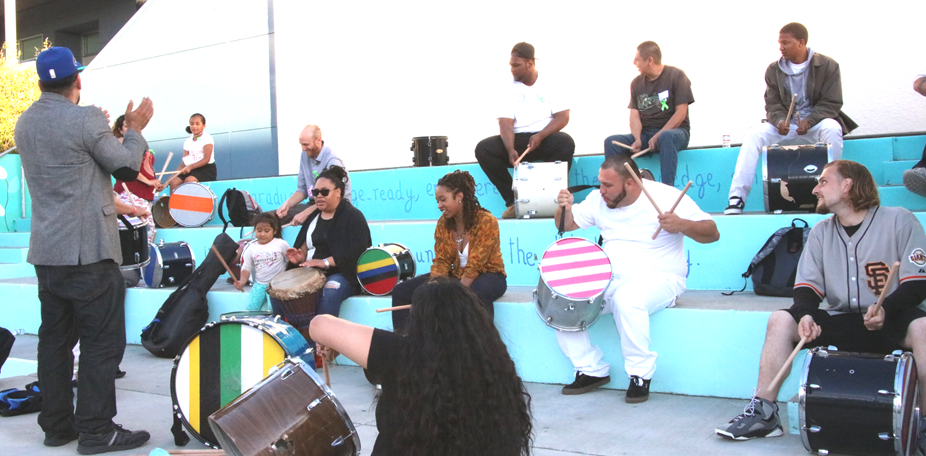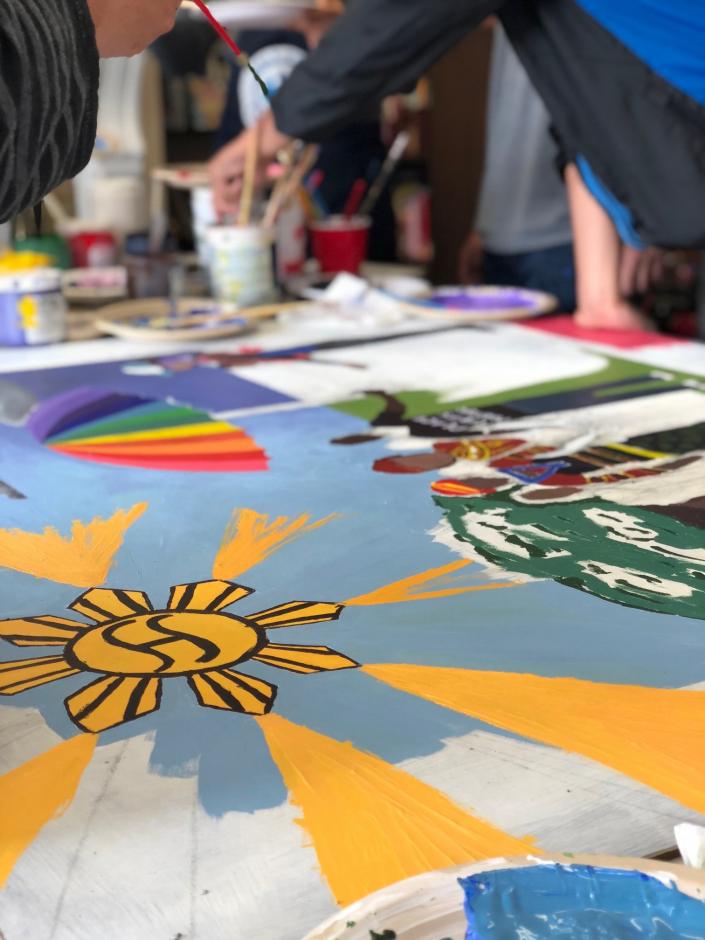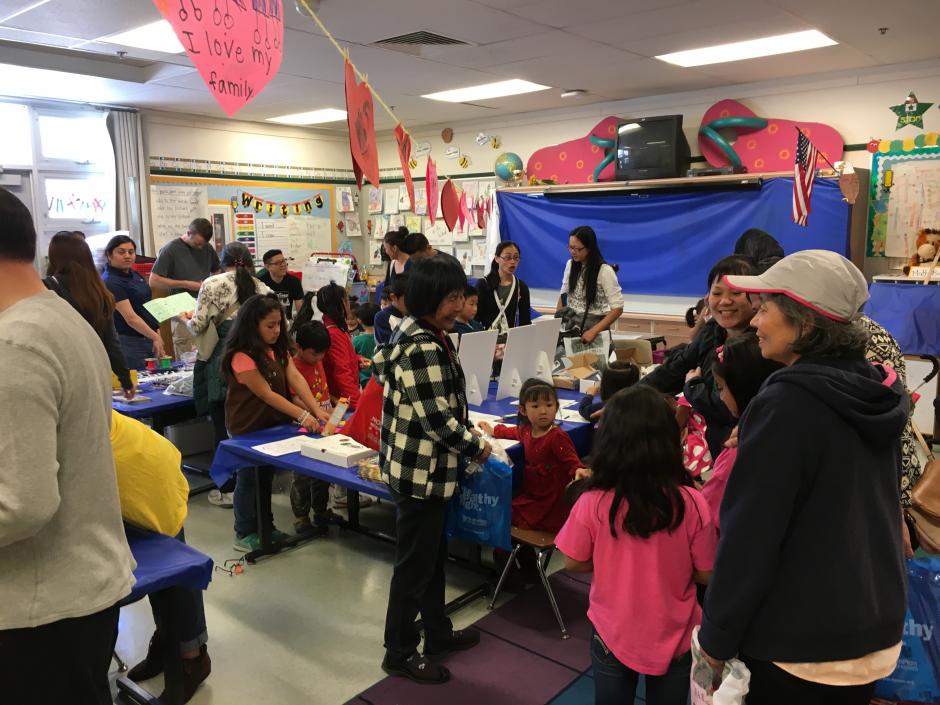Linking Communities to Behavioral Health Services
MHSA funds outreach to unserved and underserved communities
 The Mental Health Services Act seeks to
improve services and bring them to those who are most in need of
mental health care.
The Mental Health Services Act seeks to
improve services and bring them to those who are most in need of
mental health care.
The Community Services and Supports (CSS) component of MHSA funds direct services for those with a serious mental illness. CSS aims to deliver integrated, culturally competent, client and family driven services, which meet the needs of the diverse unserved and underserved communities in counties across California.
San Mateo County’s CSS dollars currently fund programs under three categories. Full Service Partnerships provide intensive, community-based mental health services for clients with complex needs. General System Development dollars help fund programs such as Puente Clinic and The California Clubhouse. San Mateo County’s Outreach and Engagement efforts are currently funded by about 761,644 MHSA dollars.
Reducing Disparities
Under MHSA, Outreach and Engagement dollars are meant to decrease disparities and improve linkages to mental health services, particularly among unserved and underserved communities. In San Mateo County, that population includes those who are seriously mentally ill but not connected to services, certain cultural groups where mental illness is especially stigmatized, and those living in more isolated areas where services are harder to reach. For years San Mateo County has employed a culturally sensitive approach to educating and connecting these people to behavioral health services, and we continue to do so today.
Outreach Collaboratives
Outreach and Engagement dollars fund two behavioral health
outreach collaboratives in the County. The North County Outreach
Collaborative (NCOC) targets rural and/or ethnic communities,
including Chinese, Filipino, Latino, Pacific Islander and LGBTQ
populations in North County, including Pacifica. The East Palo
Alto Partnership for Behavioral Health Outreach (EPAPBHO)
targets at-risk youth, transition-age youth and underserved
adults, with a focus on Latino, African American, Pacific
Islander and LGBTQ populations in East Palo
Alto. 
In FY 16-17, all NCOC outreach recipients reported belonging to one or more “special populations,” which include veterans, the homeless, the vision or hearing impaired and more. 63 percent of EPAPBHO outreach recipients were homeless or at-risk of homelessness.
Outreach workers collect demographic and other information from every meaningful interaction, which includes a dialogue about an individual’s needs, individualized information sharing, referrals, etc. Last fiscal year, the collaboratives outreached to nearly 7,000 members in the community. Through various group and individual outreach events, the collaboratives work to spread behavioral health education, reduce stigma and facilitate links to behavioral health services in their communities. These events vary in scope and structure. They host large educational events, presentations at schools, conduct individual outreach in the community and even conduct home visits.
Collaborative members generally don’t view outreach as a nine to five job. NCOC Program Supervisor Nani Wilson knows that any interaction can serve as an entry point to behavioral health education and services. That’s why she often carries resources on her. She uses casual conversations in grocery lines as opportunities to educate people about the services that are available to them.
EPAPBHO hosts an annual Family Awareness Night in the community, featuring “wellness buffets” with activities such as yoga, prayer, art therapy and drumming sessions, traditional to African American and Pacific Islander cultures. Once community members are engaged, collaborative members provide them with behavioral health education and resources that they may not have felt comfortable asking for on their own.
The culturally sensitive approach to outreach is partially informed by the stigma that tends to run deep in certain cultures. This stigma remains a huge barrier to behavioral health care for many individuals. Black and Mexican clients often talk about the difficulty they face bringing up behavioral health issues with family members. The term “mental health” does not even translate in some Asian and Pacific Islander languages.
Collaborative members have taken note of this, and often introduce mental health into a conversation by using terms like “wellness,” instead. The goal is to create communities where mental health can be discussed openly, and people are comfortable asking for help.
NCOC significantly increased their outreach to the Mexican community between FY 15-16 and FY 16-17, from 260 recipients to 1,181, more than a 350 percent increase from the year before. In FY 16-17, EPAPBHO reported a majority of their outreach recipients were Black, Tongan and Mexican.
Referrals to social services are important in ultimately connecting unserved and underserved individuals to behavioral health services. Often times, people aren’t ready to talk about – or even think about – their mental health and/or substance use issues until their more basic needs are met.
In addition to mental health and substance use services, collaborative members regularly refer clients to social services such as housing, food, legal, immigration and transportation services. It’s common for an individual to receive multiple referrals from an outreach collaborative to set them on a path toward wellness.
In Fiscal Year 2016-2017, NCOC made 494 total referrals to 152 people. 52 percent (79) of these people were referred to mental health services, and 14.5 percent (22) were referred to substance use services.
In the same year, EPAPBHO made 881 referrals to 450 community members. 14 percent (63) of those people received mental health referrals, and 25.3 percent (114) were referred to substance use services.
 Members of the collaboratives often do
more than just promote resources in the community, they establish
themselves as resources in the community. People trust
them, and their reach expands with every new meeting, event or
referral.
Members of the collaboratives often do
more than just promote resources in the community, they establish
themselves as resources in the community. People trust
them, and their reach expands with every new meeting, event or
referral.
Nobody knows this quite like Mamadee, a Pacific Islander and EPAPBHO member. Mamadee has performed years of outreach in East Palo Alto, opening her heart and home to anyone in her community who is in need. She has an acute awareness of mental health issues, an army of community partners and resources, and a deep connection to her culture and community.
“Mamadee is the heartbeat of the Pacific Islander community in East Palo Alto,” said EPAPBHO member and One East Palo Alto Executive Director Kava Talua.
Folks in the community know that Mamadee’s door is always open. She embodies one of the founding ideas behind the outreach collaboratives – that the first step to connecting people to services is by meeting them where they are.
Family Assertive Support Team (FAST)
The Family Assertive Support Team (FAST), another program supported by CSS Outreach and Engagement dollars, knows a thing or two about meeting people where they are. Operated by Mateo Lodge, FAST provides in-home outreach support services to families, in which an adult loved one, who is not connected to mental health treatment, is experiencing severe emotional distress.
The team consists of a family member, a client with lived experience and a clinician. Having people on the team who understand the perspectives of both the family members involved and the client proves tremendously helpful as they offer themselves as allies to the family.
FAST understands that families off all different kinds exist and defines “family” as a group of two or more people with close and enduring emotional ties. The kind of clients that the team helps are often living with family members, generally isolated from the outside world. Many do not fully understand that they have a serious mental illness – a condition called anosognosia, or lack of insight, as it is commonly referred to in the behavioral health community.
The FAST team works closely with each family, getting to know them, gaining their trust and eventually helping to connect them to services. They spend an average of 3 – 6 months working with each family, but each case is different.
The FAST team recently helped a family get their brother into treatment. He was in his early 40’s, living with his parents, when his father passed away causing his mental health to deteriorate. The family knew they needed outside help when they could no longer engage with him and his behavior was becoming increasingly aggressive.
The FAST team went above and beyond to get the brother help, handling welfare checks and accompanying him to get his state ID. They were able to get him into outpatient treatment for his mental health issues. They also helped walk the family through the process, offering behavioral health education and family support services.
“If [the FAST team] wasn’t there to give us the options and assist us in doing what we needed to do to help him, I don’t know where he would be today,” said the client’s sister.
The team is heavily focused on supporting the entire family, so it’s no surprise that 75 percent of last year’s client referrals came from families. 14 percent came from BHRS, which maintains a close, collaborative relationship with FAST. Occasionally, FAST will make their first contact with a client in jail or at a hospital. Last year 42 percent of FAST clients were hospitalized or incarcerated at the time of referral. Referrals can be made by calling 650-368-3178.
While FAST has a much more individualized and family-centered approach than the outreach collaboratives, the mission is the same: connect those in need to behavioral health services. Last year, FAST linked 62 people to mental health services. They connected 14 people to alcohol and other drug services and 33 people to physical health services.
In addition to connecting community members to behavioral health services they vitally need, San Mateo County’s Outreach and Engagement efforts have given our whole community a greater understanding of behavioral health and wellness.
